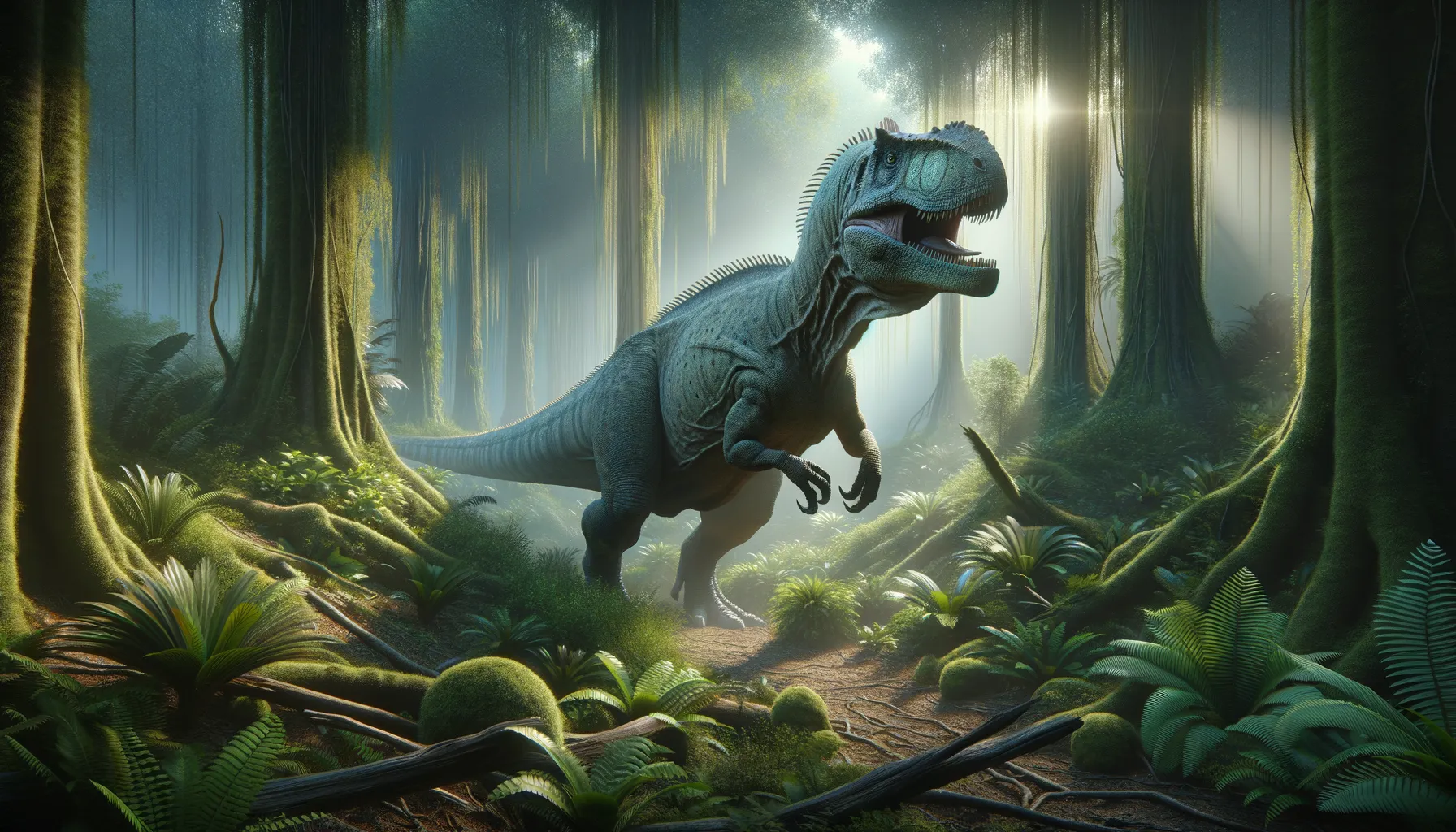
Iguanodon
Herbivore giant with iconic thumb spikes!
Period
Cretaceous
Length
Around 30 feet from head to tail.
Height
About 16 feet at the shoulder.
Weight
Approximately 3 to 5 tons.
Iguanodon was a large herbivorous dinosaur living during the Cretaceous period. Recognized for its thumb spikes, it roamed in herds across what is now Europe. Capable of walking on two or four legs, it was one of the first dinosaurs ever discovered. This groundbreaking find led to important insights into dinosaur behavior and classification, showing a diverse and complex prehistoric world.
Diet
Iguanodon was primarily herbivorous, feeding on the abundant plant life of the Cretaceous period. Its beak-like mouth allowed it to nip vegetation, while its grinders processed tougher plant material.
Hunting
As a herbivore, Iguanodon did not hunt but was likely preyed upon by large carnivorous dinosaurs. Its thumb spikes may have provided some defense against predators.
Environmental challenges
Iguanodon faced challenges from changing climates and volcanic activity during the Cretaceous period. Adaptations in diet and social structure may have helped it cope with environmental pressures. Periodic droughts and food shortages likely posed ongoing challenges to survival.
Speed
Moderate pace, capable of quick bursts.
Lifespan
Likely between 20 to 30 years.
First discovery
Discovered in 1822 in England by Gideon Mantell.
Fun Facts
- Iguanodon was one of the first dinosaurs ever discovered and was named in 1825.
- Its name means 'iguana tooth' because its teeth resembled those of a modern iguana.
- Iguanodon was a herbivore, feeding on plants, and it lived during the late Jurassic and early Cretaceous periods.
- It could walk on two legs or all fours, making it quite versatile in movement.
- Iguanodon had a large, spiky thumb which was likely used for defense against predators.
- Fossils of Iguanodon have been found in Europe, Asia, and North America, showing it had a wide range.
- The first Iguanodon fossils were mistakenly reconstructed with a horn on the nose, which was later corrected to a thumb spike.
Growth and Development
Iguanodon began life from eggs, growing rapidly to reach maturity. The growth rate would have slowed as it approached full size, necessitating large amounts of food. Fossil evidence suggests that juveniles may have been protected within herds from an early age.
Habitat
Iguanodon lived in diverse environments, from lush forests to open plains. It thrived in regions that were rich in plant life, which provided ample food sources. Proximity to water would have been crucial for sustaining large herds.
Interaction with other species
Iguanodon likely interacted with other herbivorous dinosaurs, often sharing grazing territories. Though primarily prey, its defensive capabilities would have played a role in deterring attacks from carnivorous species. Fossil evidence suggests cohabitation with varying dinosaur species in the same regions.
Natural lifespan
A natural lifespan reaching up to 30 years seems possible.
Reproduction
Iguanodon reproduced by laying eggs, likely in nests constructed by females. Fossil nests suggest communal nesting behaviors with multiple females laying eggs in proximity. The parental role after hatching remains uncertain, though living in herds might have offered protection.
Social behaviour
Iguanodon is believed to have been a social creature, often moving in large herds. Herd dynamics likely offered protection from predators and facilitated efficient foraging. Some evidence suggests complex social interactions, although much remains speculative.
Fossil locations
Fossils of Iguanodon have been predominantly found in Europe, especially in England, Belgium, and Spain. Multiple sites have contributed significantly to our understanding of this dinosaur, providing well-preserved skeletons. Iguanodon fossils have also been discovered in parts of North America, expanding its known historical range.
